How to Exfoliate Your Face and Body
Exfoliation with the right ingredients can be beneficial for almost all skin types. Nowadays, as more products become available, it can be hard to pick and choose exactly what will best suit your skin.
5-Minute Crafts created a simple and easy guide to explain what to do and what not to do when it comes to exfoliation.
What exfoliation does
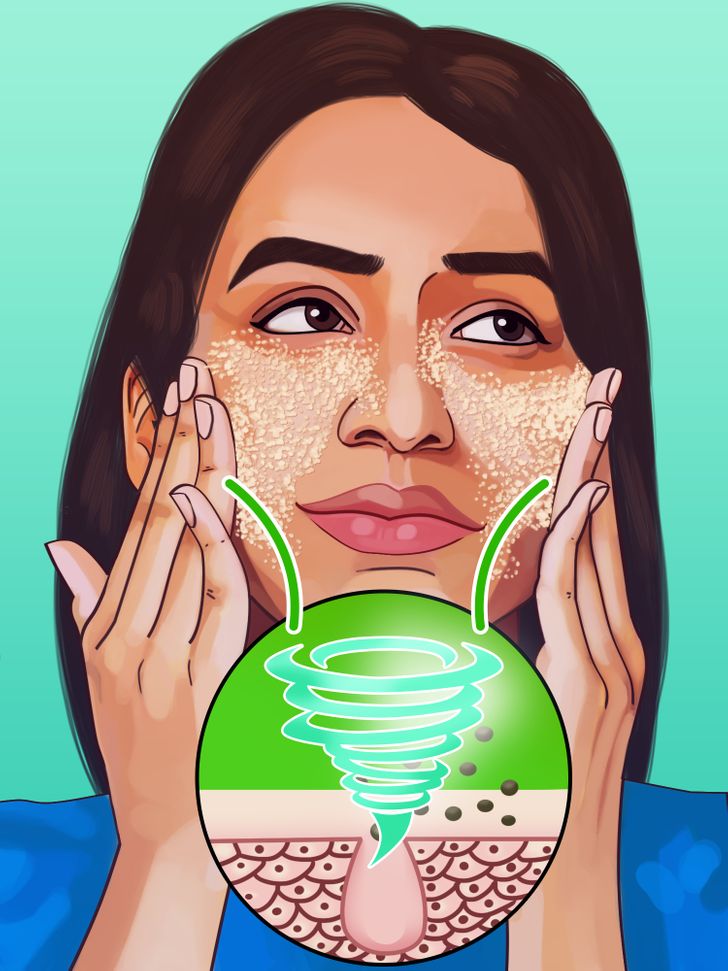
Exfoliating is the process of removing dead skin cells from the outer layer of your skin using an exfoliant. It stimulates cell turnover at a more rapid pace. This can improve your skin’s appearance by making it smoother, brighter, and preventing clogged pores from developing.
Types of exfoliants
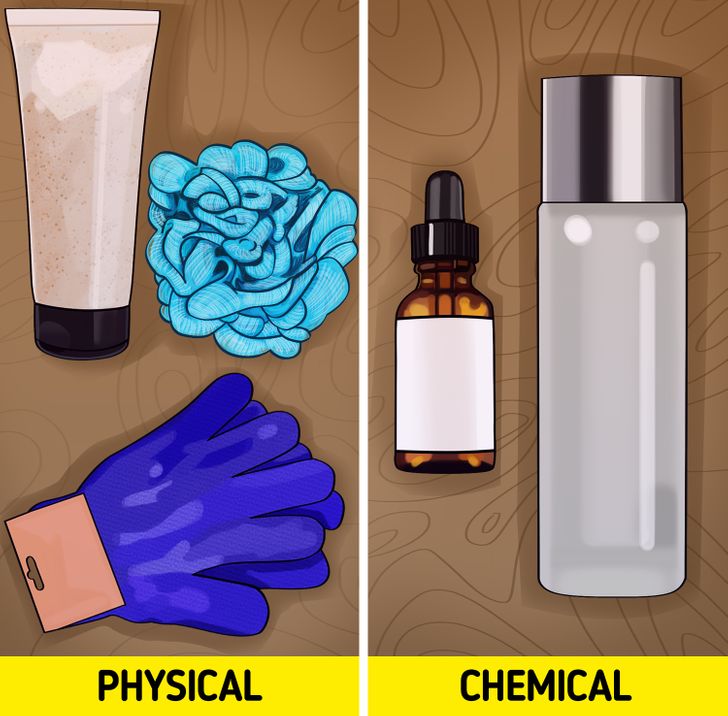
There are 2 kinds of exfoliants:
- Physical exfoliants work by manually removing dead skin cells using friction. Examples include washcloths, brushes, sponges, loofahs, and scrubs that contain sugar, salt, or microbeads.
- Chemical exfoliants (BHAs, AHAs, PHAs) are used to gently dissolve dead skin cells. Ingredients such as salicylic acid, glycolic acid, lactic acid, and lactobionic acid are used as chemical exfoliants.
How often to exfoliate
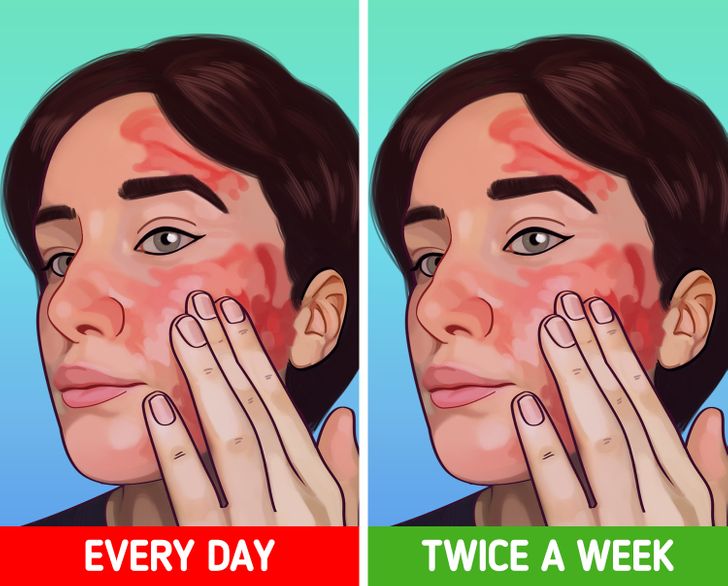
How often you exfoliate should vary depending on your skin type and method of exfoliation. But in general, anywhere from one to 4 times per week is fine. If it’s your first time using exfoliators, start with once a week, see how your skin reacts, and gradually increase the frequency.
Note: Do not over exfoliate though, as this can lead to redness and irritation.
1. How to exfoliate the face
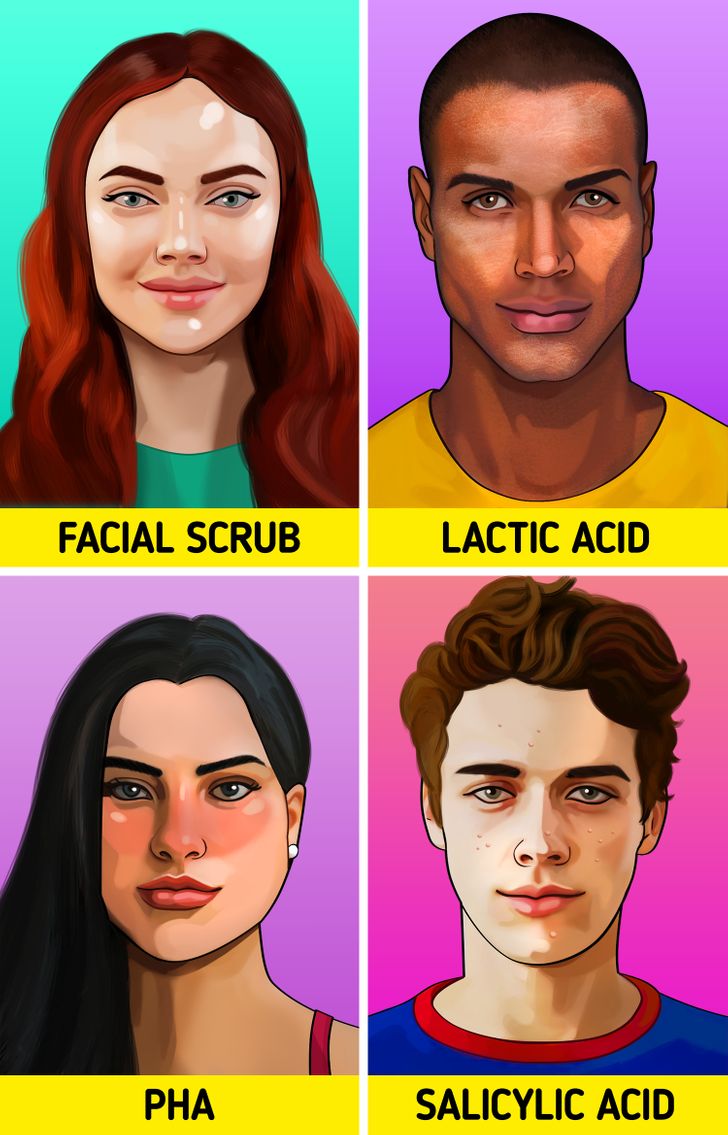
The type of exfoliant you choose should depend on your skin type, condition, and how sensitive your skin is. However, chemical exfoliants tend to be more gentle than physical ones.
- Normal skin (not too oily, dry, or sensitive) comes down to personal preference. You can try any kind of exfoliation and see what works best for you.
- Oily skin tends to be more resilient, so this skin type can often tolerate stronger chemical and physical exfoliators. Salicylic Acid (BHA) can be a good option as it has oil controlling properties.
- Dry skin benefits from Alpha Hydroxy Acids (AHAs) like glycolic or lactic acid, as these ingredients exfoliate but also hydrate the skin at the same time.
- Sensitive skin is tricky, as it can react to products more easily. Polyhydroxy Acids (PHAs) like lactobionic acid and gluconolactone tend to be less irritating than other acids and overall gentler options. Avoid manual exfoliation if you have this skin type.
- Acne-prone skin should be on the lookout for Salicylic Acid (BHA) as it can treat acne, blackheads, and clogged pores. But if you struggle with persistent acne, it’s always best to consult a dermatologist.
2. How to exfoliate the body
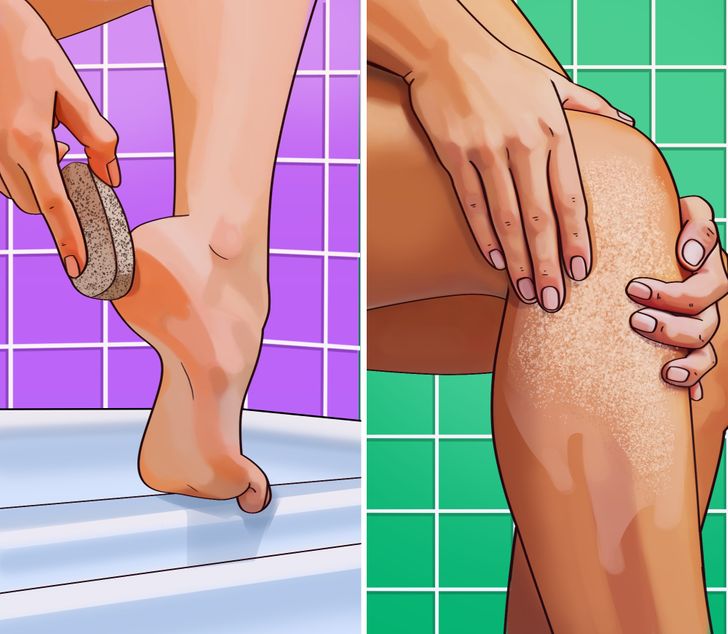
The skin on our body is important too, and exfoliating it can bring the same benefits to facial skin. It’s also thicker and more resilient, so it can tolerate stronger scrubs or solutions. Loofahs, sponges, brushes, gloves, or body scrubs are all good options. Use them while you take a bath or shower.
- If you struggle with keratosis pilaris, also known as “chicken skin,” look for products containing urea or AHAs, like glycolic and lactic acid.
- For the feet, a pumice stone is commonly recommended to remove dry skin and calluses.